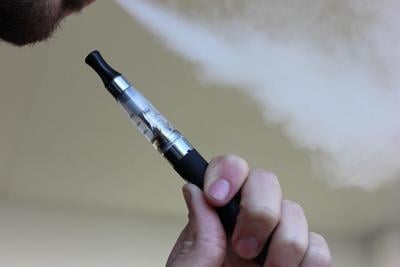
Vaping has changed the way people enjoy cannabis. It’s cleaner than smoking, easier to control, and often hits faster. THC vape pens have become a go-to choice for many because they’re small, simple to use, and easy to carry around.
As more people turn to vaping, the number of devices and features keeps growing. Some heat up faster, others let you control the temperature, and a few even connect to your phone.
In this guide, we’ll break down the main types of vaporizers and how they work. Whether you're new to vaping or looking to upgrade your device, our comprehensive comparison will help you navigate the growing market available through exclusive online sales.
Conduction vs. Convection Heating
Vaporizers typically use one of two heating methods: conduction or convection. What's the difference?
Conduction heating warms your cannabis directly through contact with a hot surface. It’s fast and efficient, and is common in many THC vape pens. However, it can lead to uneven heating or burnt hits if not controlled well.
Convection heating, on the other hand, uses hot air to vaporize the material without direct contact. This method gives you smoother, more flavorful draws and is often used in higher-end devices and desktop vaporizers.
Some models use a hybrid system that combines both methods, giving you a fast heat-up time and rich vapor quality. They also highlight some of the key differences between vaping vs. smoking, especially when it comes to how heat impacts the plant and your lungs.
Disposable vs. Rechargeable Systems
The market offers both disposable and rechargeable vaporization options.
Disposable THC vape pens are the grab-and-go choice. They come pre-filled and ready to use, with a battery that lasts just long enough to finish the extract inside. Once it’s done, you toss the whole pen. Super convenient, especially for beginners or occasional users.
Frequent user? Rechargeable vape pens are your ideal option. They feature replaceable cartridges and batteries that can be recharged hundreds of times.
While initially more expensive, they are a long-term investment. Most also include extras like temperature control, preheat modes, and battery indicators, letting you fine-tune your experience.
Oil vs. Concentrate vs. Dry Herb Vaporizers
One of the main factors to consider before vaping is carnabis formats. Each format brings a unique effect. But more importantly, it determines the device you’ll use because each device is built for different materials.
For one, oil vaporizers work with pre-filled cartridges that hold cannabis distillate or live resin. These are the most common THC vape pens, great for consistent dosing and smooth hits.
Concentrate vaporizers are designed for thicker forms like wax, budder, or shatter. They heat up hotter and faster to handle dense extracts and deliver powerful effects.
Dry herb vaporizers use real ground cannabis flowers. They take a bit more prep but offer a full-spectrum experience, preserving the full range of cannabinoids and terpenes in the plant. Each method offers a different vibe, whether you're chasing flavor, potency, or a natural feel.
Temperature Control Technology
Heat matters a lot. The temperature you vape at affects both flavor and effects. It also significantly impacts which compounds are vaporized from cannabis extracts.
Lower temperatures (320-350°F) preserve delicate terpenes and produce milder effects, while higher temperatures (375-430°F) release more cannabinoids but may compromise flavor.
Some premium devices even connect to your phone, giving you full control and letting you tailor your session down to the degree.
Airflow Systems and Vapor Quality
Airflow is key to a satisfying hit. Unfortunately, many users overlook it when planning their vape sessions.
Basic vape pens offer limited airflow, which can make draws feel tight or too warm. But high-end vaporizers come with adjustable airflow, longer vapor paths, or even cooling chambers. These features cool down the vapor before it hits your lungs, making for a smoother, less irritating experience.
Some devices also use sealed air paths made from materials like ceramic or stainless steel. This keeps the flavor pure and prevents weird plastic tastes from creeping in.
Battery Life and Charging Options
Battery power plays a big role in how often you can vape, and how much you have to plan for charging. Standard vape pens feature batteries with 280-650mAh capacities. These are good for light use, approximately 100–300 puffs per charge.
Premium portable vapes come with 1800–3500mAh batteries. With such battery capacities, these pens often last multiple days on charge.
Most newer models use USB-C for fast charging, and some even let you swap out batteries, which is perfect for long trips or festivals where outlets are hard to find.
Smart Features and Connectivity
The latest generation of vaporizers incorporates smart technology. While basic THC vape pens remain simple, premium devices now offer digital displays, haptic feedback, automatic shut-off, and session tracking.
Some even connect to your phone via Bluetooth, unlocking advanced settings like session timers, puff tracking, and firmware updates.
Want to share your custom setup with friends or track your THC usage over time? There’s an app for that.
These smart tools aren’t just bells and whistles: they help users stay consistent, avoid overheating, and get the most out of every session.


(0) comments
We welcome your comments
Log In
Post a comment as Guest
Keep it Clean. Please avoid obscene, vulgar, lewd, racist or sexually-oriented language.
PLEASE TURN OFF YOUR CAPS LOCK.
Don't Threaten. Threats of harming another person will not be tolerated.
Be Truthful. Don't knowingly lie about anyone or anything.
Be Nice. No racism, sexism or any sort of -ism that is degrading to another person.
Be Proactive. Use the 'Report' link on each comment to let us know of abusive posts.
Share with Us. We'd love to hear eyewitness accounts, the history behind an article.